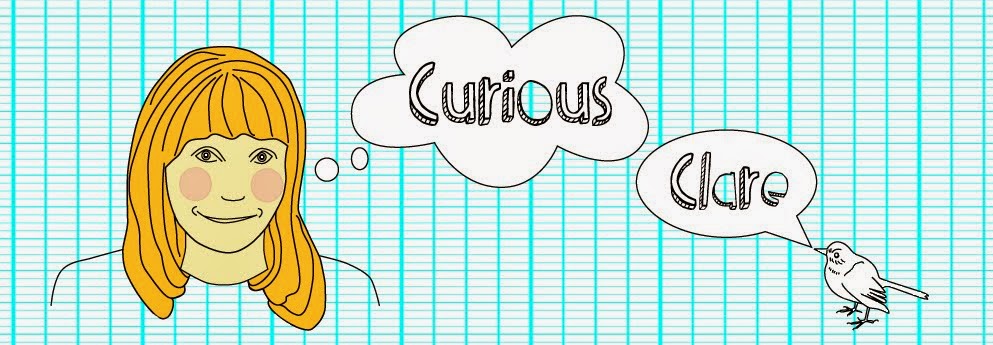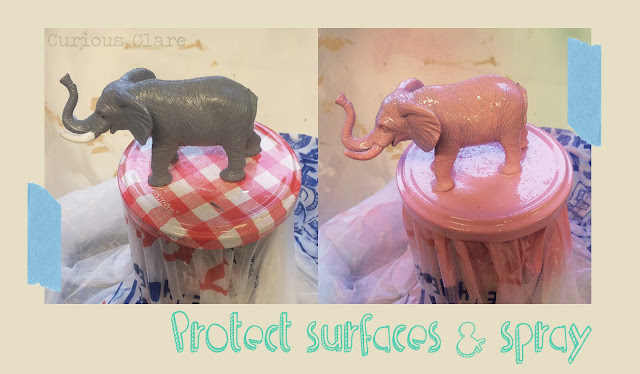Did you like Art at school and were you good at it?
I did like Art at school ...actually I loved it. I had a really fab teacher who gave us a lot of freedom. If you have a great teacher, then it makes the world of difference and often you don't realise just how good your teacher was until you are older.
What inspired you to be an artist?
I never wanted to be anything else. It was never a conscious decision to become an artist. I just always felt the strong urge to be creative. I knew that the only way that I could be truly happy was to do it as much art I could and hopefully one day make a living out of it. I am very lucky to be doing it as my job, but it is still a job and I have to work very hard at it. But it is the best thing in the world.
What is your favourite thing about nature?
I love how nature is an endless source of inspiration, it is everywhere you just have to look. I live in the city and I still see midnight foxes and secret magpies building nests into the roof from where I live. There is always something new to see or learn and there are always new species being found every year.
Why did you go into Textiles?
I moved into
Textiles deliberately, as for years I had tried many different mediums from
leather work to paper craft and I just wanted to see what would happen. It then
just seemed like the best fit and now it seems like I had been searching for
ages for a way to interpret my ideas. Textiles suits me the best out of
everything I have tried.
If you weren't a Textile artist, what would you be?
I would like
to be involved in the world of insects in some way. Not sure in which way though!
I am always quite jealous of when you see those museums full of wooden drawers
and cases filled with beetles and butterflies. I’d like to work somewhere like
that. Maybe I would try conservation and do some field work out in a tropical
jungle...
Why do you like nature so much?
I love
nature for so many reasons. I love how symbolic animals and birds are. I
particularly like the stories and folklore that surround them.
What is your favourite insect?
This is hard
but if I had to pick a single insect it would be the Orchid Mantis. It is a
really sinister insect but one that I find incredibly beautiful. Apparently it
hides in a flower and is the most amazing shade of pink.
 |
| More images of this fascinating creature can be seen here |
Yes, I do
use a pattern especially for the butterflies and moths. I’ve made then
freestyle in the past but they can come out a bit too big and clumsy looking so
I try to limit this and stay within a certain size and shape. The spider and
beetles however are mostly cut freehand.
How long does it take to make your insects and
creations?
I can
usually make a couple of insects in one day, however larger work can take days.
The really large work like the swan and huge moths took a couple of weeks to
make. They are made in exactly the same way as the smaller items just bigger
and a ton more stuffing!
What is your favourite creature that you have made
so far?
I really
like to make insects, plus the spiders and moths are really fun to make. I find
them satisfying to create and they often have really distinctive personalities
quite early on.
Why do you use vintage materials in your work?
Using vintage
and old fabrics is something I have always done and will always continue to do.
I love turning something old or something that is only destined to be thrown
away into something new and beautiful. Initially I worked with old clothes
because I had no money to use anything else. Even if I became super rich I
would still use the same fabrics. Old things and fabrics have had lives and
maybe had adventures. You are sewing in a story, it’s this thought process that
I love and which is so important and central to my work.
Are any of your pieces in collections worldwide and
if so, in which countries?
I'm lucky in
that my work is all over the world from Japan and U.S.A to France and Africa. I
have people who collect my work and have heard that Emma Watson collects my
beetles.
Have you ever had ‘artists block’?
I have yes
but it is not something I suffer from much or have often. Everybody has a
different cure for being 'blocked' and how to get out of it. I don't think it is
as simple as one cure unblocks everyone. Trying to see as many new things as
possible and drenching my brain in nature programmes or books tends to do the
job for me though.
How much do you sell your work for?!
My works
starts from £45 for a butterfly and goes up from there. Large wall hares and
foxes start from £450. I’ve added old jewellery in the past which has pushed
the price a lot higher but don't do this much though.
 |

























